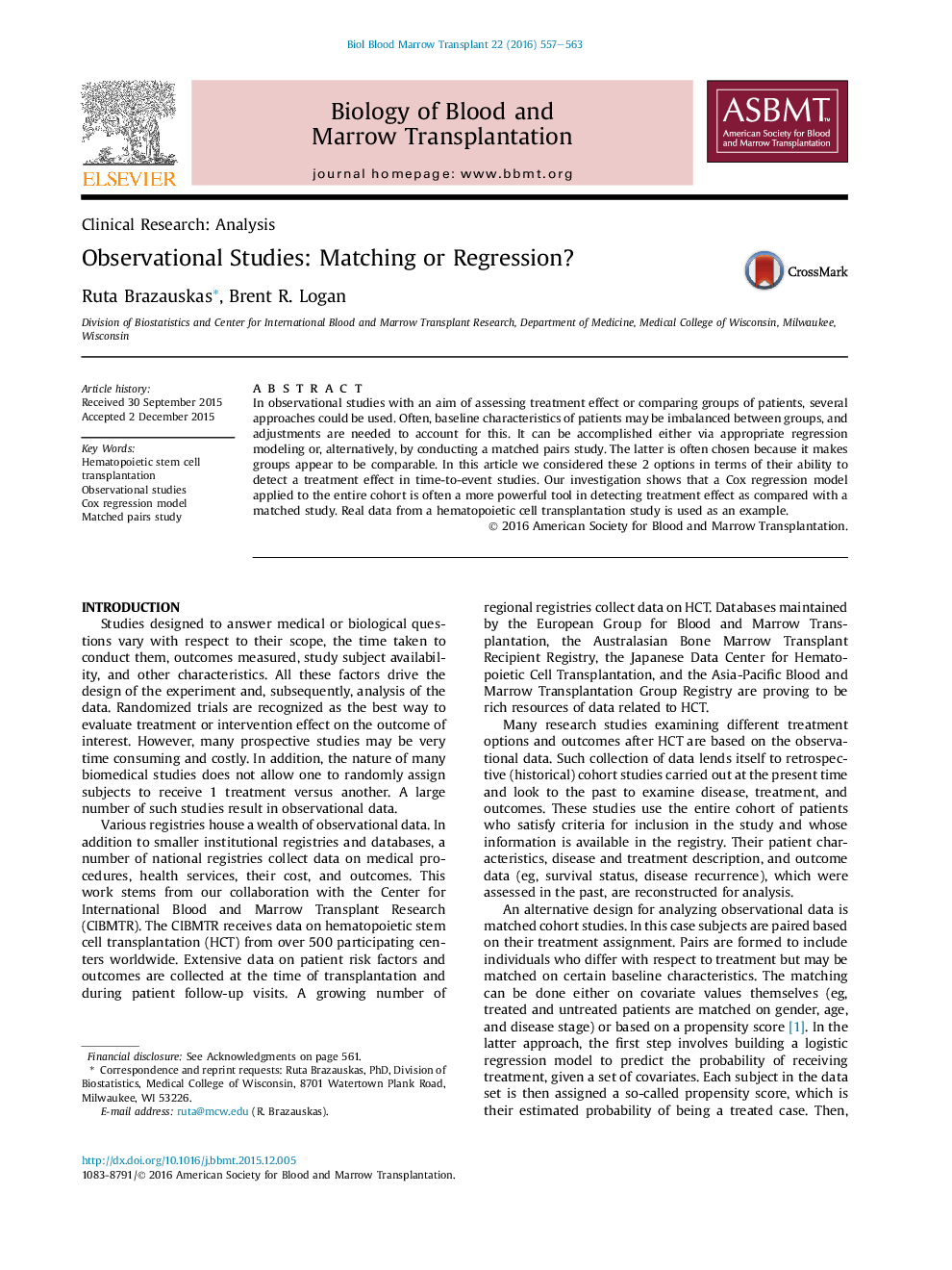| Article ID | Journal | Published Year | Pages | File Type |
|---|---|---|---|---|
| 2101811 | Biology of Blood and Marrow Transplantation | 2016 | 7 Pages |
•Accounting for imbalances in patient characteristics is needed when assessing treatment effect.•Choices in study design are regression modeling or matched-pairs study.•A regression model is often a more powerful tool in detecting treatment effect than a matched study.
In observational studies with an aim of assessing treatment effect or comparing groups of patients, several approaches could be used. Often, baseline characteristics of patients may be imbalanced between groups, and adjustments are needed to account for this. It can be accomplished either via appropriate regression modeling or, alternatively, by conducting a matched pairs study. The latter is often chosen because it makes groups appear to be comparable. In this article we considered these 2 options in terms of their ability to detect a treatment effect in time-to-event studies. Our investigation shows that a Cox regression model applied to the entire cohort is often a more powerful tool in detecting treatment effect as compared with a matched study. Real data from a hematopoietic cell transplantation study is used as an example.
